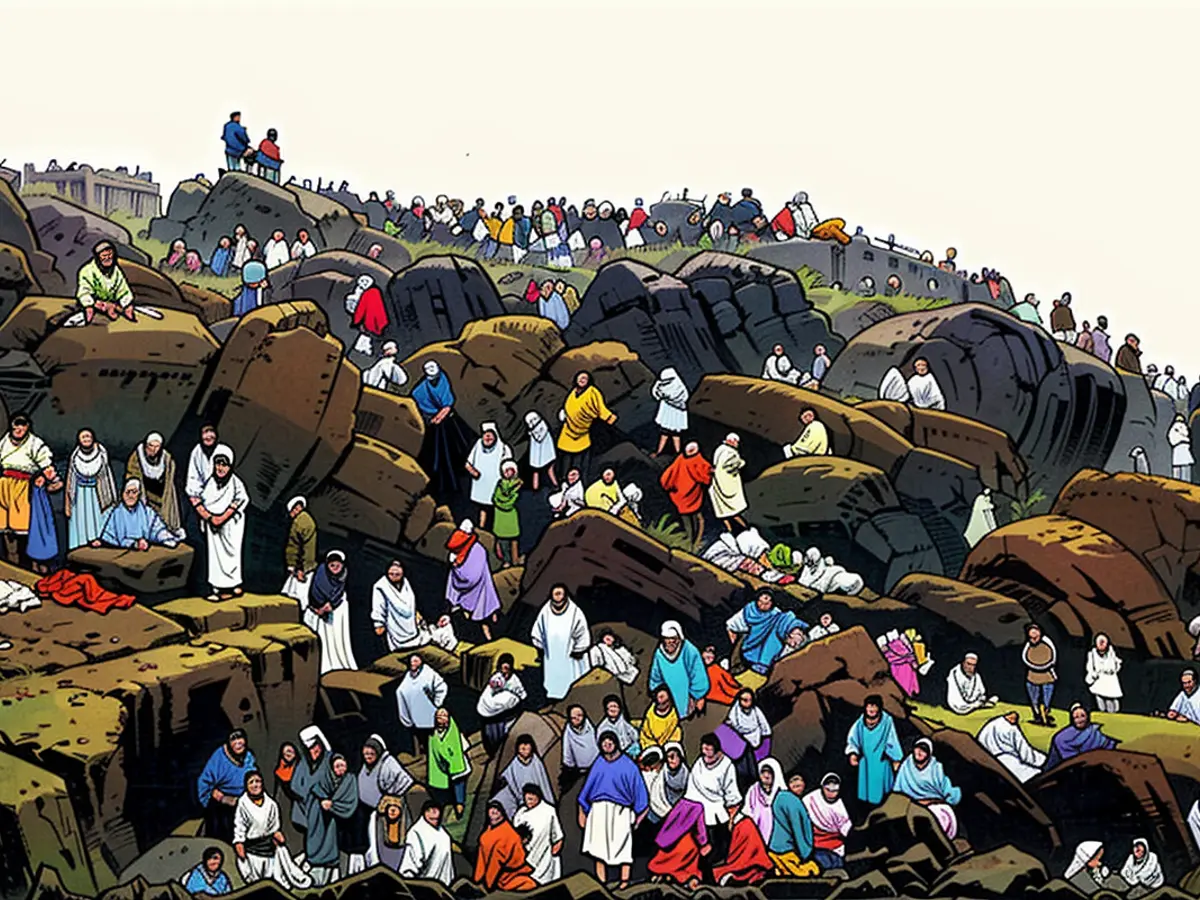Over 1.5 million Muslim pilgrims ascend Mount Arafat amidst scorching temperatures.
Annual Islamic Pilgrimage Amidst Heat Wave and Middle East Conflict
The Hajj, one of Islam's core practices, requires every devout Muslim to attend this final pilgrimage of Prophet Mohammed in Saudi Arabia at least once in their lifetime. This year's Hajj is being affected by blistering heat and the ongoing Israel-Hamas conflict.
During the climax of the Muslim Hajj, more than 1.5 million individuals scaled the 70-meter high Mount Arafat despite the extreme heat. These pilgrims, adorned in white, started their ascent to the hill where Prophet Mohammed is said to have delivered his last sermon, as early as dawn. Authorities implored the pilgrims to stay hydrated and shield themselves from the sun.
"It's no walk in the park because of the heat," expressed Abraman Hawa, a 26-year-old from Ghana. "But I'll pray to Allah on Mount Arafat because I need his blessing." An Algerian pilgrim held onto a free parasol from the organizers, stressing its importance. "This helps me in these conditions," he pointed out. A 46-year-old Egyptian carried a list of prayers. "This is the most significant day of my life," he stated. "I also pray for the Palestinians. May Allah guide them."
In the midst of the pilgrimage, the Israel-Hamas conflict in the Gaza Strip was ever-present. The Saudi Arabian government previously vowed to silence any political activities at the Hajj. However, at least one pilgrim voiced support for the Palestinian populace: "May Allah bestow victory upon the Muslims," he shouted.
According to state media, around 2000 Palestinians were granted special invitations to the Hajj by King Salman. The spiritual leader of Iran, Ayatollah Ali Khamenei, addressed the Hajj pilgrims in a message, advocating for the support of Palestine and the enduring, oppressed people of Gaza.
Climax of Hajj
This five-day event in Saudi Arabia symbolizes one of Islam's five foundational practices. Every devoted Muslim, who is physically capable and can afford it, is expected to take part in the pilgrimage at least once in their lifetime.
The bulk of the Hajj, designed to mirror Prophet Mohammed's last pilgrimage over 1400 years ago, transpires under an open sky. After circumnavigating the Kaaba, a square structure at the center of the Grand Mosque, pilgrims spend the night in Mina near Mecca. Before ascending Mount Arafat, they journey to Muzdalifa, where they gather pebbles as a symbolic act of stoning the devil on the following Sunday in Mina.
Last year, over 1.8 million pilgrims attended the Hajj. Around 90% of attendees hailed from other countries.
Read also:
- Despite the ongoing Israel-Hamas conflict, the Hajj, a core practice in Islam, continued amidst the scorching temperatures in Saudi Arabia.
- Amidst the religious fervor on Mount Arafat, some pilgrims expressed support for the Palestinians, echoing the sentiments of the Islamic faith that promotes peace and justice for all Muslims.
- The Israeli-Palestinian conflict also impacted the international community, with Saudi Arabia promising to maintain political neutrality during the Hajj to ensure the safety and peaceful conduct of the pilgrimage.
- Even as Mecca witnessed the climax of the Hajj, the city of Mecca, home to Islam's holiest sites, remained a place of unity and harmony for Muslims from various backgrounds, reinforcing the message of tolerance and religious harmony.






